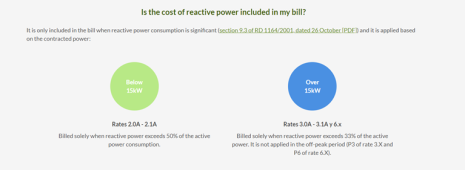Hey Folks
My understanding is that some appliances, namely inductive loads such as motors, will cause real and reactive power to flow in AC circuits.
However, I have come to learn that apperently, domestic properties are only billed for the real portion of the power (in kwh), even though the power company has to supply both real and reactive power.
Where my confusion lies is when comparing how many kwh my solar system has generated, vs how much my home has consumed from the grid. I've been taking the kwh readings from my epever SCC and Merross smart switches (which are on the solar inverter) to be equal to the kwh that my power company grid meter says.
Eg, I would usually say to myself: "my epever generated 5kwh of power today. This means I saved 5kwh of grid power, less whatever solar system losses there might be".
But is this wrong? For appliances such as a tumble dryer, does this mean that 5kwh of solar would only cost eg 2-3kwh on grid? (Assuming a tumble dryer is 50% reactive power)
While getting monetary payback was never my priority for building this system, my calculations always landed on ~15 year payback. But if this reactive power is the case, perhaps I'll never see payback for the life of the system.
Thanks
My understanding is that some appliances, namely inductive loads such as motors, will cause real and reactive power to flow in AC circuits.
However, I have come to learn that apperently, domestic properties are only billed for the real portion of the power (in kwh), even though the power company has to supply both real and reactive power.
Where my confusion lies is when comparing how many kwh my solar system has generated, vs how much my home has consumed from the grid. I've been taking the kwh readings from my epever SCC and Merross smart switches (which are on the solar inverter) to be equal to the kwh that my power company grid meter says.
Eg, I would usually say to myself: "my epever generated 5kwh of power today. This means I saved 5kwh of grid power, less whatever solar system losses there might be".
But is this wrong? For appliances such as a tumble dryer, does this mean that 5kwh of solar would only cost eg 2-3kwh on grid? (Assuming a tumble dryer is 50% reactive power)
While getting monetary payback was never my priority for building this system, my calculations always landed on ~15 year payback. But if this reactive power is the case, perhaps I'll never see payback for the life of the system.
Thanks




